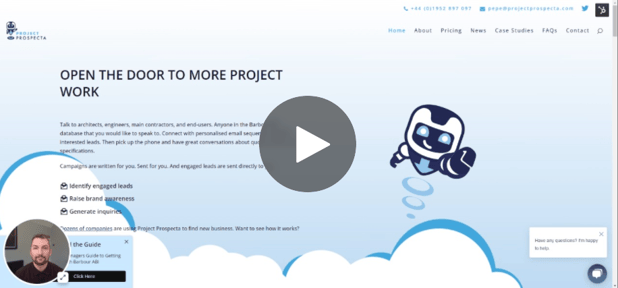
“We don’t do cold calling here!” says Dan Tyre during our Hubspot Pipeline Generation Bootcamp.
Did I say cold calling?
I meant WARM CALLING.
I’m on a 6 week sales training program hosted by Hubspot for agency partners and users. It gives practical tips, coaching, and training opportunities to improve sales skills.
Dan’s advice is to research your prospect on LinkedIn, Instagram, or Google. Then mention something personal (alma mater, recent accomplishments, interests) that you discovered in your research on your connect call. This makes a cold call instantly warmer.
A great tip. And just one of many from Trygve Olsen, Dan Tyre, and Keith Guiterrez. In an average session, Trygve coaches us through scripts as Dan and Keith take turns giving advice and running role-plays. A football jersey hangs on the wall behind Trygve. This makes the session feel even more like playing on a team.
I feel like an imposter. My primary job is marketing not sales.
Then why did I go on a sales crash course? Because when you’re starting a new marketing service, everyone has to muck in, make connect calls, and get deals over the line.
Also, understanding sales is helpful for marketing. If you don’t know the feeling of talking to a low-intent lead verse high-intent, then you won’t feel the need to increase lead quality with better content.
After learning from these three sales pros I have a new approach to prospecting. I’ll outline three of my biggest takeaways here.
1. Pause after your opening line
The natural thing to do when someone answers the phone is to introduce yourself.
So far so good.
But what do you do next?
I would rush into a hurried explanation of why I’m calling and why it’s not a waste of their time. But, this introduces all the worst elements of a sales call. Pressure. Selfishness. Transaction.
Instead, we practice pausing.
“Hi this is Jack from Project Prospecta” [pause]
[awkward silence]
[it feels like forever]
[it really does]
“oh, yes?”
“Thanks for picking up the phone”
How does this change the framing? It slows the pace down. It puts the prospect in control. They don’t feel pressure. You’re able to connect and have a conversation rather than give a pitch.
Also, by saying “thanks” you recognise that they took time out of their day to talk to you. And it is a positive way to start the conversation.
2. Positioning statement
Then you can introduce the reason for your call with a positioning statement.
Positioning statement formula: we help companies like x achieve y – does that sound like you?
For instance:
“We help contractors who are spending too much on scaffolding lower costs and improve access – is that an issue you’re having?”
Or
“We help architects who are specifying A1 fire-rated cladding systems identify the best solutions for their project – is this something you’re investigating?”
The positioning statement establishes the context of the call. It’s an introduction to your company that focuses on the benefit to the customer.
And if they say, “yes, we have that problem!” You say “tell me more about that”. You probe further. This way you learn and listen. The purpose is to understand if this contact is the right fit for you. And if your business is right for them.
3. Use video
If you aren’t able to get through on the phone, then send a video in an email. But don’t people just ignore emails? One way to not get ignored is to include a video.
Like this one:
Video helps you connect on a personal level, even if it’s not in real-time. Voice communicates empathy better than text. And your prospect sees your face. Psychologically, these are huge advantages over a traditional text email.
You can download the Vidyard Chrome Extension for free here: Vidyard Video Recorder
Big Tip: record the video with their website as a backdrop. This tickles the Lizard Brain (the primitive impossible-to-ignore part of brain function) and immediately makes them interested in watching.
Conclusion
“BOOM. You’re a lion.”
That’s what Dan Tyre says at the end of the class.
You start the class as a cub, you finish a lion. Why a lion? Because lions live in packs. And the Lions group is a supportive atmosphere to learn new skills and have accountability to put them into practice.
If you’d like to attend a Hubspot Bootcamp you can find more information here: Hubspot Bootcamps
And if you’d like to hear more about my experience, feel free to pop 15 minutes in my calendar for a virtual meeting: Let's Chat

